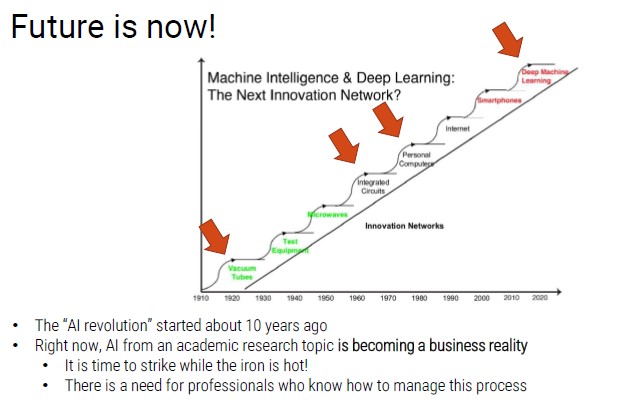Historical Evolution of AI
To understand why AI is so important today, we have to analyze the past.
In 1950 the enthusiasm for AI began:
- Turing Test: "Can machines think?"
- 1954: one of the main experiments in machine translation
- 1955: Arthur Samuel wrote a program that could play checkers very well
- 1957: Rosenblatt invented perceptrons, a type of neural network
First AI Winter - promises of AI were exaggerated
In 1980 the Boom times occurred:
- Commercialization of new AI Expert Systems capable of reproducing human decision-making, through "if-then-else" rules
- Financial planning, medical diagnosis, geological exploration, and microelectronic circuit design
Second AI Winter - many tasks were too complicated for engineers
In 2012 the Deep Learning revolution took place
- Solved mathematical problems
- New powerful Neural Networks
- Huge improvement with the computational power
- Introduction of GPUs
Problem with data
- AI models need huge amount of training data
- Currently, we are able to:
- Acquire a lot of data (IoT)
- Store huge amount of data (improved storage)
Today, the question is not if we are able to collect data, but if we are able to use them.


Last update:
January 9, 2023 20:28:16
Created: October 5, 2022 14:32:28
Created: October 5, 2022 14:32:28
Authors: